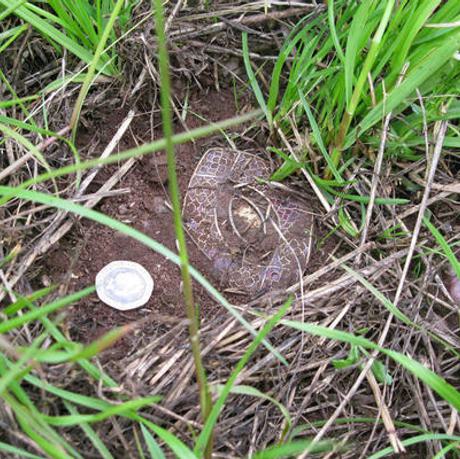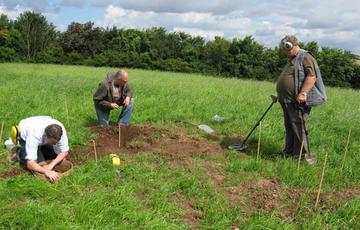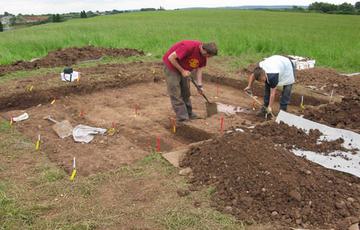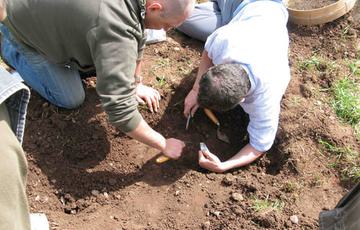Discovering the Staffordshire Hoard
ResourcesWhat is the Staffordshire Hoard?
The Staffordshire Hoard is the largest collection of Anglo-Saxon gold and silver metalwork ever found, anywhere in the world.
It contains just under 4,000 objects and broken fragments, most of which are war-gear.
The quality of the workmanship is extremely high which is remarkable in view of the large number of individual objects, such as swords or helmets, from which the elements in the hoard came.
When was the hoard buried?
The hoard was buried in the 7th century (AD 650-675). We know this because some objects in the hoard are similar to pieces found at sites which can be better dated.
Who buried the hoard?
We do not know who actually buried the hoard, but we do know that the objects in the hoard would have belonged to the top ranks of Anglo-Saxon society.
Where was the hoard discovered?
The hoard was discovered in a field near the village of Hammerwich, near Lichfield, in Staffordshire. This area was the heart of the kingdom of Mercia during the Anglo-Saxon period.
Why did they bury the hoard?
Experts have theorised about why the hoard was deposited where it was, and who left the treasure. There are many possible answers to this question. It may have been loot from a battle or the ransom for a king. It may have been an offering to the gods or treasure hidden from attackers. We may never know the right answer.
Pupil activity
What reasons can you think of as to why the hoard was buried?
Sutton Hoo and Beowulf
Sutton Hoo
The closest parallel archaeological find to the Staffordshire Hoard is Sutton Hoo. The great burial of a prince or king was unearthed in 1939. A large mound was found to contain a 90-foot-long wooden ship complete with a central burial chamber. This chamber was once furnished with textiles and contained the dead man’s possessions, including magnificent gold and garnet weapon fittings and a striking panelled helmet.
Beowulf
The famous Saxon poem Beowulf contains lines that experts believe may describe circumstances similar to the burial of the hoard:
‘One warrior stripped the other, looted Ongentheow’s iron mail-coat, his hard sword-hilt, his helmet too, and carried graith to King Hygelac; he accepted the prize, promised fairly that reward would come, and kept his word. They let the ground keep that ancestral treasure, gold under gravel, gone to earth, as useless to men now as it ever was.’
Staffordshire Hoard Biblical Inscription
The hoard contains one item with writing on it. It is a biblical inscription written in Latin and is misspelled in two places, and reads
‘Rise up, O Lord, and may thy enemies be dispersed and those who hate thee be driven from thy face.’
Watch the short animation that shows the object unfold and the inscription strip translates.
Finding the Staffordshire Hoard
Who found the Hoard?
The first pieces of the hoard were discovered in 2009 by local metal-detectorist Terry Herbert.
The site was then assessed by archaeologists to see whether any more objects might still need to be recovered and to decide if an archaeological dig was needed.
What happened during the archaeological dig?
The archaeological dig aimed to recover the rest of the hoard and to discover if there was any evidence to show why the hoard had been buried there. The excavation lasted for four weeks and covered an area of 155 square metres.
Remarkably all the objects in the hoard were found in the plough soil, within a few inches of the surface. Originally the hoard was probably deeper underground than this. It appears that the soil above the hoard had been eroded down the hill slope by ploughing, gradually reducing the amount of earth above the hoard. When Fred Johnson, the farmer, ploughed the field in autumn 2008, he went just deep enough to disturb the hoard and spread the objects through the plough soil.
The excavators found no other Anglo-Saxon features where the hoard had been buried. There were no buildings, no burials, and no signs of a battle. This suggests that the hoard was hidden in a wild area, far from any human settlement.
A few more objects from the hoard were found in 2012, when the field was ploughed again for the first time since the original find.
Image gallery
What happened next?
The hoard was declared as Treasure at a coroner’s inquest. With the help of record donations from the public and some major grants, the finds were purchased by Birmingham and Stoke-on-Trent City Councils on behalf of the nation.
The hoard is cared for by Birmingham Museums Trust and the Potteries Museum & Art Gallery, Stoke-on-Trent. The two museums have been working together on a large-scale conservation and research project. Along with archaeologists, scientists, historians and curators from across the UK and Europe, specialist scientific analysis, investigative cleaning and X-ray photography of these amazing finds has taken place.
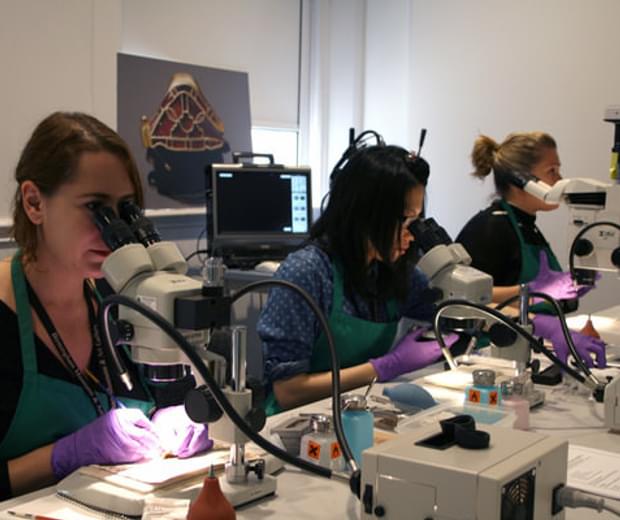
Find out more...
...about this conservation and research project by viewing the learning resource: The Science behind the Staffordshire Hoard.
